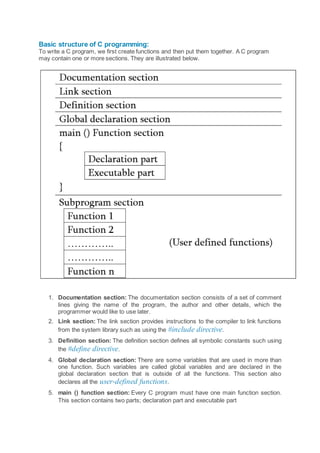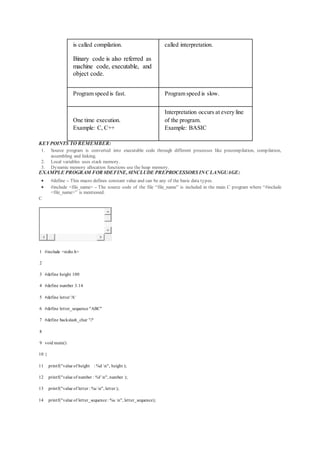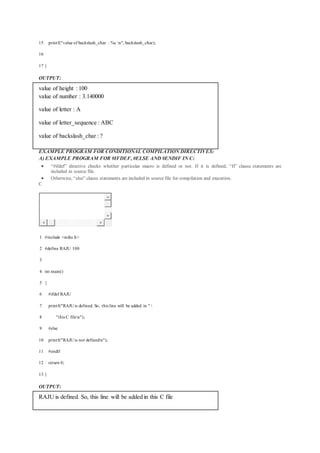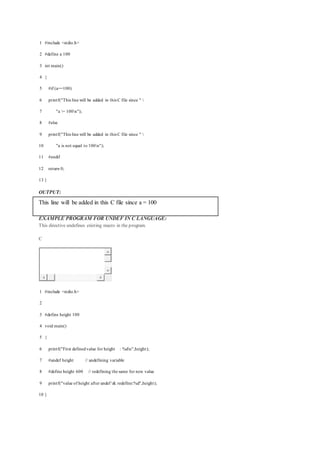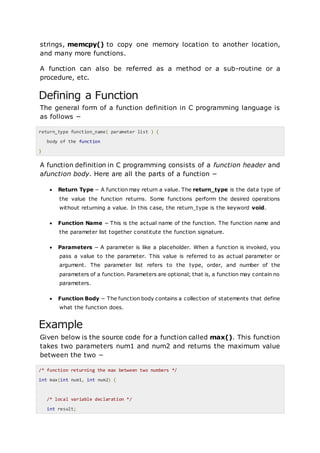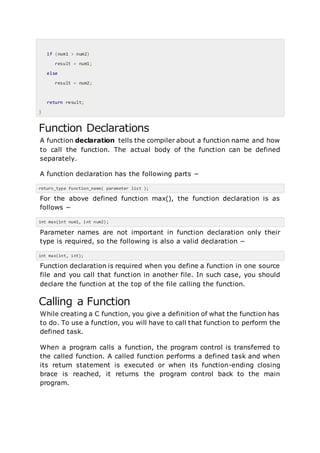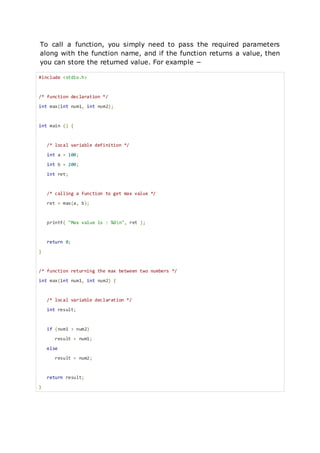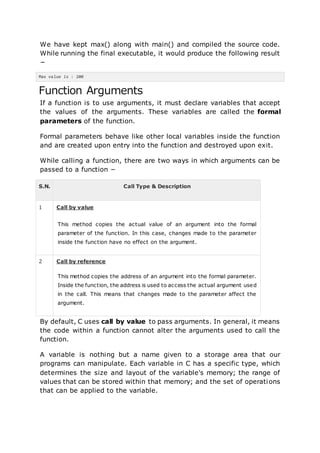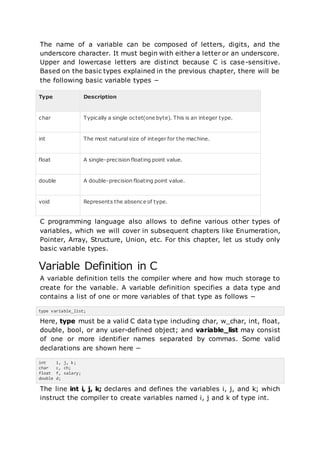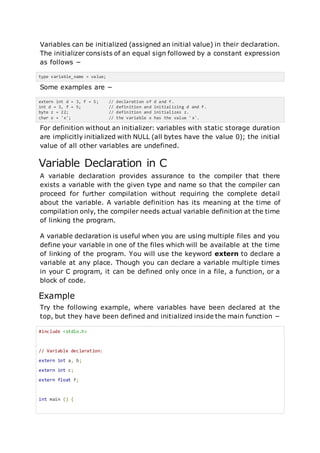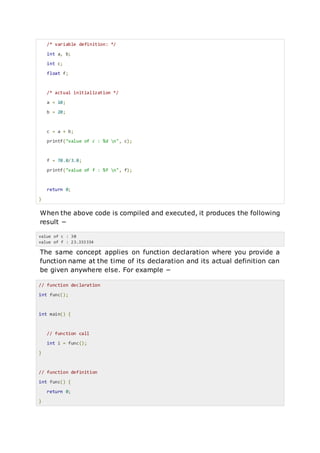The document discusses the basic structure of C programs. It explains that a C program contains functions that are organized into different sections, including a documentation section, link section, definition section, main function section, and optional subprogram section. It provides details on what each section is used for and example code to demonstrate the main components of a C program, including functions, variables, data types, and memory organization.
